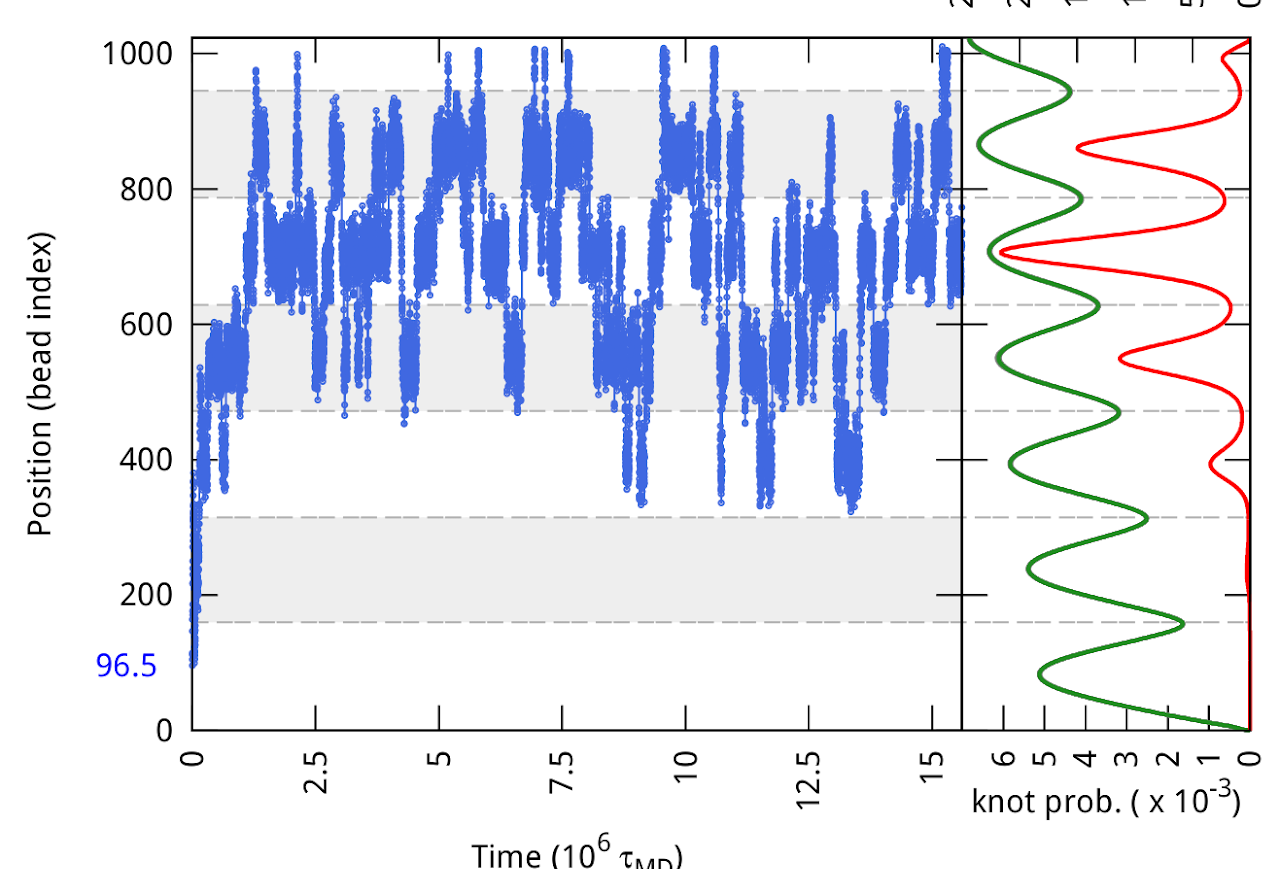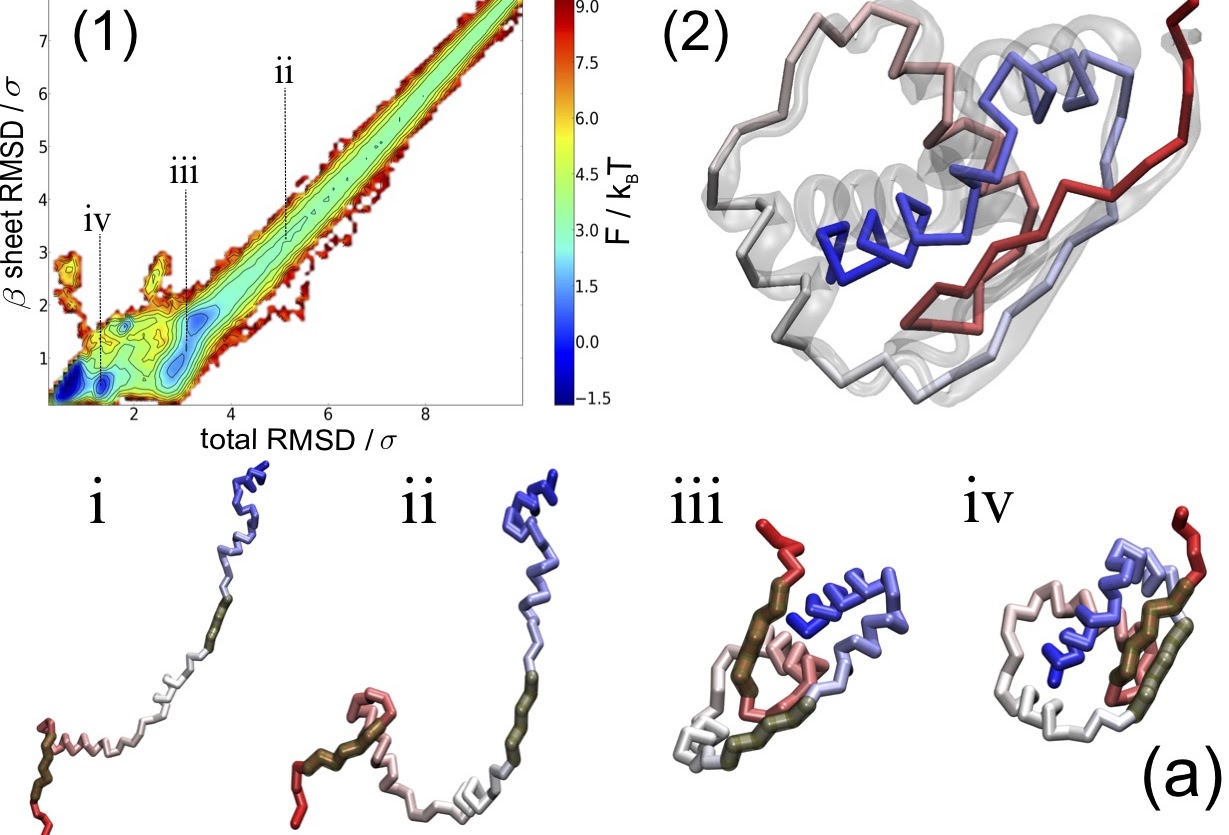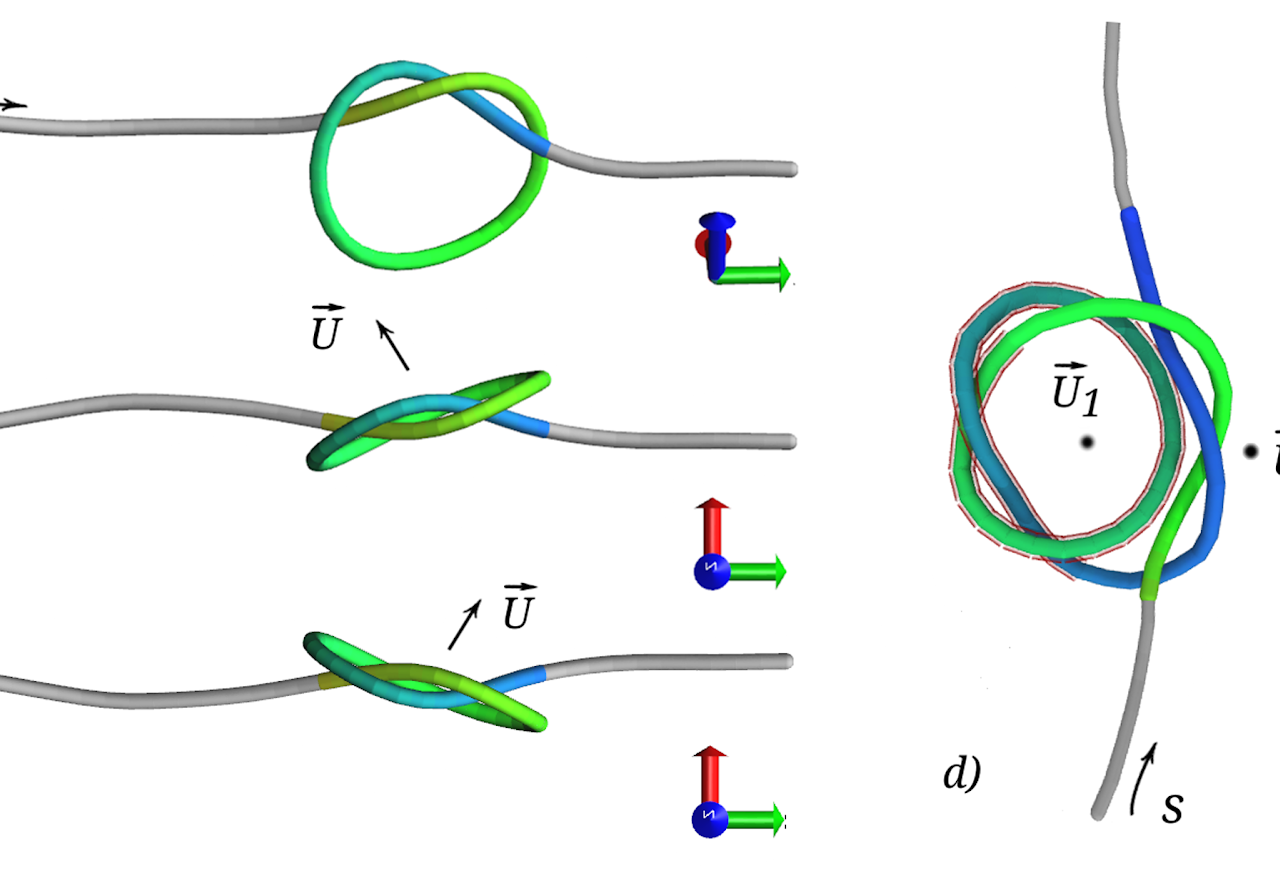Dealing with entangled and knotted strings and ropes, such as ones’ shoelaces, is a common everyday problem, however the same kind of topological complexity occurs on much smaller sized systems, all the way dow to the nanoscale – e.g. in proteins and DNA filaments. As a consequence, entanglements bear profound impact in fields ranging from biology to physics and from engineering to medicine. A central problem for a living cell is to organise its DNA in order to prevent entangled states which would hinder the correct cell division. Contrary to most expectations, on the other hand, knots and links have also been found embedded in the structure of several proteins, where their function and folding mechanisms is far from understood.
The goal of this research line is to characterise the physical mechanisms that underlie the formation of knots in biopolymers, their statistical properties, their interaction, and the impact they have on the overall system. These questions are tackled in different specific, problem-dependent ways, ranging from simplified representations of knotted DNA filaments to multi-scale approaches to the problem of self-entangled protein folding.
   |
REPRESENTATIVE BIBLIOGRAPHY
- Claudio Perego and Raffaello Potestio, Computational methods in the study of self-entangled proteins: a critical appraisal, Journal of Physics: Condensed Matter (2019)
- Claudio Perego and Raffaello Potestio, Searching the Optimal Folding Routes of a Complex Lasso Protein, Biophysical Journal (2019)
- Saeed Najafi, Luca Tubiana, Rudolf Podgornik and Raffaello Potestio, Chirality modifies the interaction between knots, Europhys. Lett. 114 (5) (2016)
- Saeed Najafi, Rudolf Podgornik, Raffaello Potestio and Luca Tubiana, Role of Bending Energy and Knot Chirality in Knot Distribution and Their Effective Interaction along Stretched Semiflexible Polymers, Polymers 8 (10) (2016)
- Saeed Najafi and Raffaello Potestio, Folding of small knotted proteins: Insights from a mean field coarse-grained model, J. Chem. Phys. 143, 243121 (2015)
- Raffaello Potestio and Luca Tubiana, Discretized knot motion on a tensioned fiber induced by transverse waves, Soft Matter, 12, 669-673 (2015)
- Tatiana Skrbic, Silvio a Beccara, Roberto Covino, Cristian Micheletti and Pietro Faccioli. Folding of a Knotted Protein From with a Realistic All Atom Force Field , PLoS Comp. Biol. 9, e1003002 (2013)
- Tatiana Skrbic, Cristian Micheletti and Pietro Faccioli, The Role of Non-Native Interactions in the Folding of Knotted Proteins. PLoS Comp. Biol. 8 e1002504 (2012)
- Raffaello Potestio, Cristian Micheletti and H. Orland, Knotted vs. Unknotted Proteins: Evidence of Knot-Promoting Loops, PlOS Computational Biology, 6(7) (2010)

